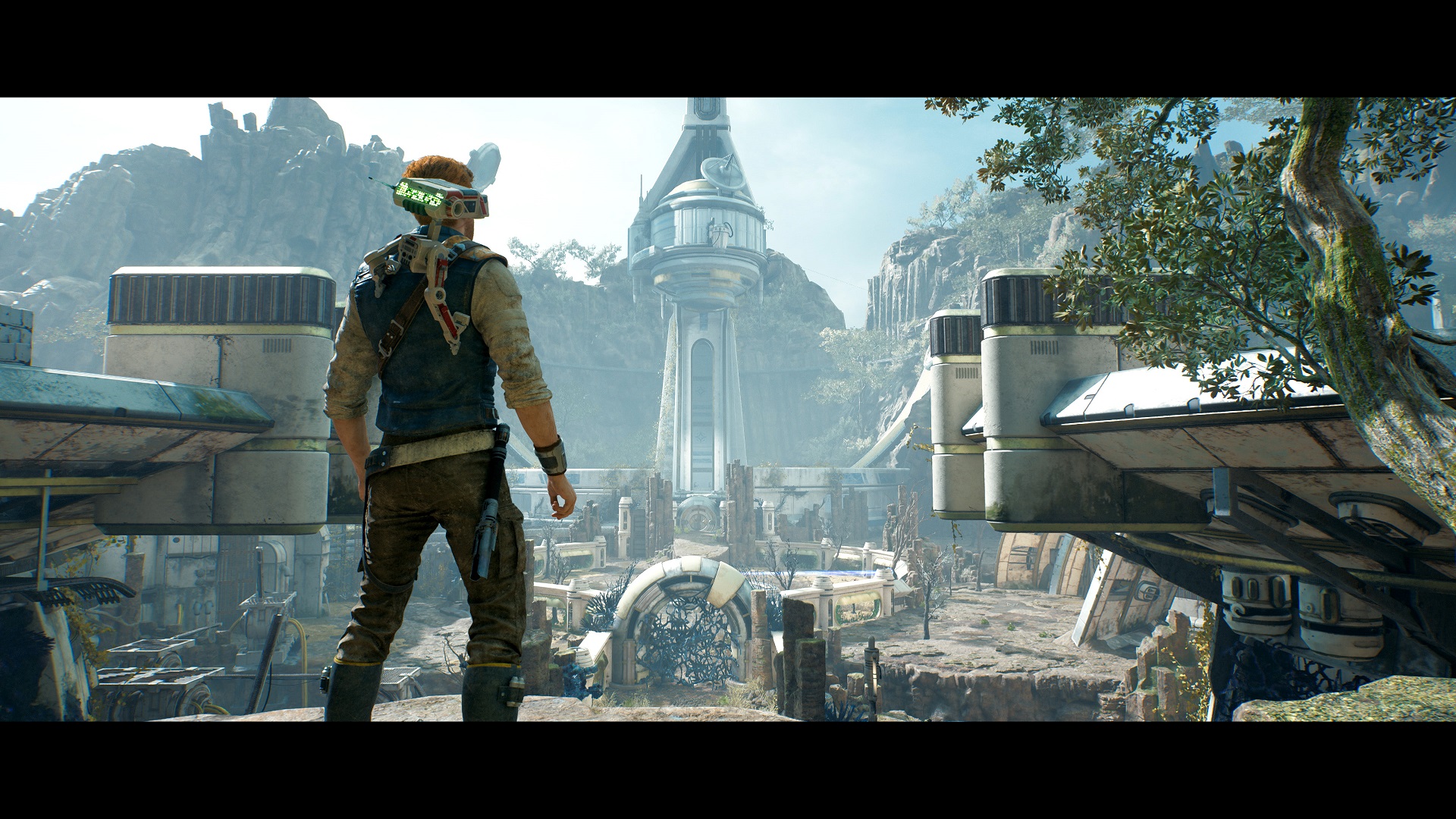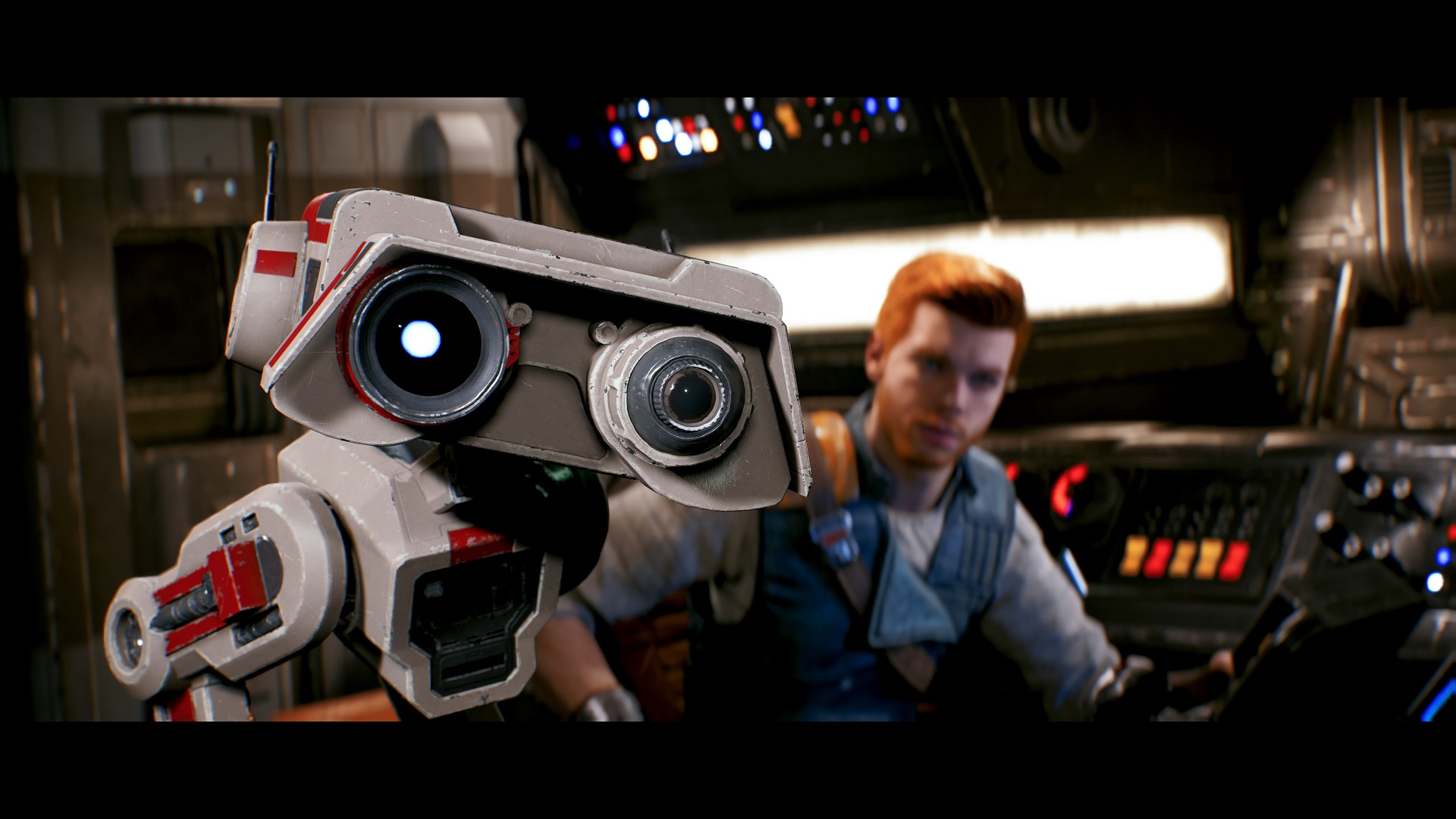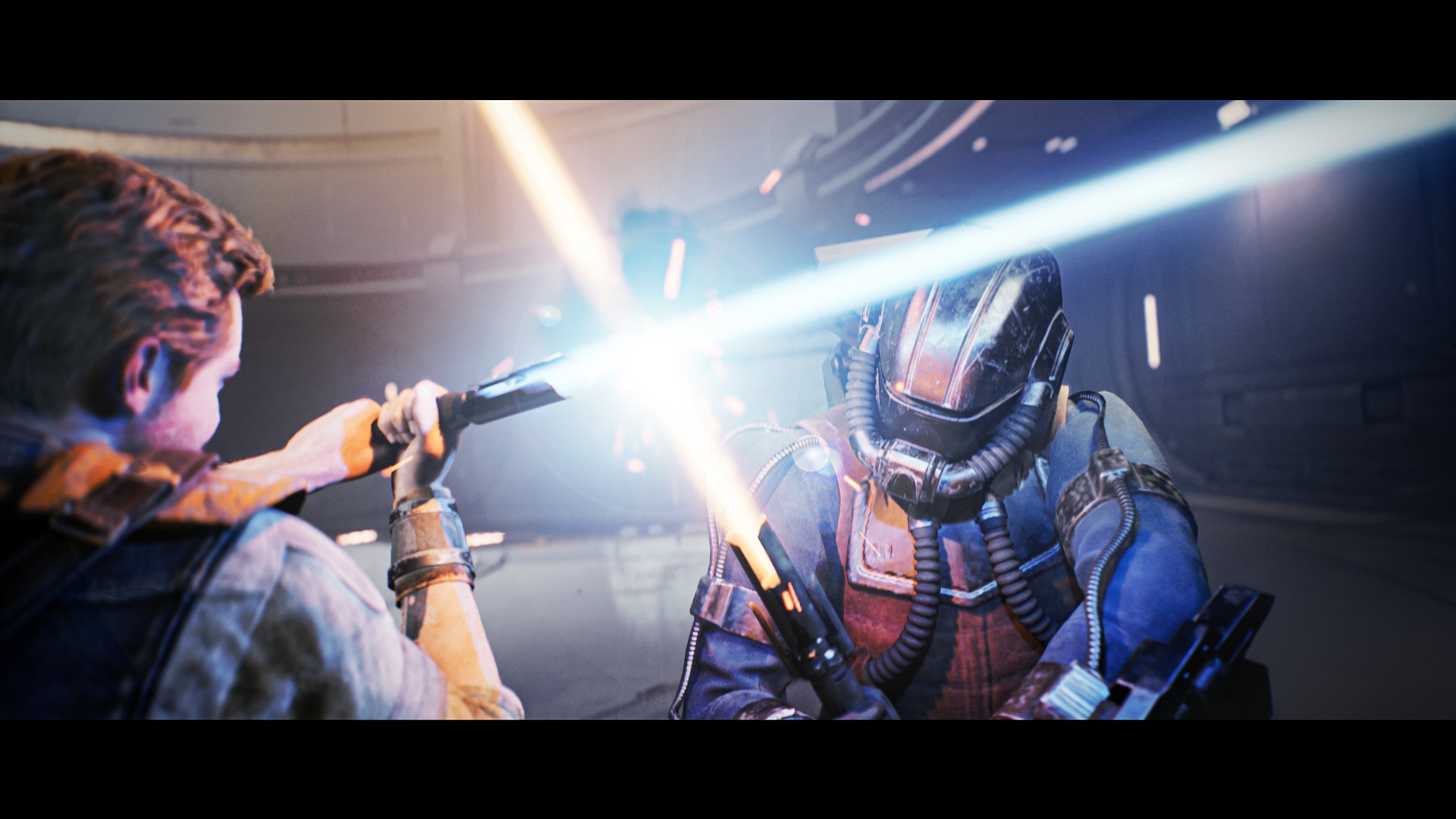The first few hours of Star Wars Jedi: Survivor are equal parts familiar and foreign. On the one hand, the follow-up to 2019’s Fallen Order isn’t looking to reinvent the wheel completely — you’ll still spend most of your time exploring strange new planets, dicing up enemies, and using the world’s two most versatile tools: Force Push and Force Pull. But, while Jedi: Survivor treads recognizable ground, it also surprises with its many additions and changes, giving players more freedom to tackle Respawn Entertainment’s next adventure as they see fit.
Picking up… (consults notes) five years after the events of Fallen Order, Cal Kestis is on a new mission to do… something. We aren’t allowed to talk too much about the story, and if I’m being honest, I wouldn’t want to. If the section of the game we played is any indicator, Cal will come across both old and new characters on his journey, and these moments are best experienced on your own. For the purposes of this preview, I can say that Cal and BD-1 are on the hunt for parts to fix up their damaged ship, and along the way, they reunite with Greez, the cantankerous yet lovable four-armed pilot fans got to know and love in Fallen Order.
As welcome as this reunion was, what really caught my attention was the shift in level design. While Fallen Order certainly had side paths and optional objectives, Jedi Survivor is upping the ante with more open environments, which can be explored and navigated as you see fit. In many ways, it’s very reminiscent of Uncharted: Lost Legacy — at its core, it’s still a linear game, but one that offers some flexibility in tackling it. Of course, it’s worth noting that, during our hands-on time with Jedi Survivor, we only came across one of these more open “hubs,” though we certainly hope that the full game will feature additional ones.

For those that like to veer off the main path, there are plenty of distractions and side quests to keep you busy. You’ll recognize some familiar collectibles such as plantable seeds and health pickups, but there are also new secrets to suss out, with optional shrines and platforming time trials catching our attention the most. Thankfully, while other games of the same ilk rely on map markers and waypoints to point you in the direction of every collectible, Jedi: Survivor smartly settles on subtly guiding and nudging the player in a particular direction, and it’s all the better for it.
As has become mandatory for third-person narrative-driven action games, there are plenty of environmental puzzles to solve, though, for better or worse, they aren’t too taxing. While some have arguably been overused over the past five years — namely, the “put item A into receptacle B to create bridge C” type of puzzle — there were a few that feel just fresh enough to avoid any major scrutiny. My personal favorite was a new type of rolling trip mine that locks onto Cal and attempts to pursue him before exploding. These pesky hazards can easily be avoided, but they can also be used in combat, or to open up new paths by Force grabbing and launching them into structurally weakened walls.
Despite launching to generally positive reviews, Fallen Order wasn’t without fault. For those who played it at (or close to) launch, you might remember the finicky camera and lock-on system, which could often betray you in the heat of battle. Speaking of which, while the combat itself was one of the game’s highlights, it often felt weighty and sluggish (an issue exacerbated by the 30fps target on consoles), and that also applied to the movement in general. If these shortcomings were a particular bugbear, you can rest easy — Jedi: Survivor has remedied these issues, and Cal’s platforming and combat skills feel noticeably more fluid and tight this time around.

Speaking of which, his repertoire has seen a few noteworthy, welcome changes. Unlike Kratos, Cal hasn’t forgotten all of the abilities that he learned during his last outing; right off the bat, players will have access to Force Push, Pull, and Flip, as well as the ability to wall run and ride ziplines in either direction. Similarly, Cal’s two lightsaber types (single-blade and double-blade) have been recategorized as combat stances, with a third one, Dual Wield, unlocked from the get-go. While Double-Bladed allows for greater crowd control, Dual Wield splits Cal’s lightsaber into two weapons, allowing for more aggressive, high-risk high-damage play. The Single stance is, as expected, the standard lightsaber, balancing both offense and defense.
With most Fallen Order players only gaining access to the double-lightsaber towards the end of that game, Jedi: Survivor‘s combat feels much more dynamic and varied, largely because Cal starts the game with three of five stances unlocked. On that note, during our hands-on time at Jedi: Survivor‘s preview event, we caught a glimpse of a few later-game unlocks, thanks to a Respawn lead designer who went to town on a test level that serves as a never-ending combat arena. The fourth stance, Crossguard, doles out massive damage in exchange for long windups, while the final one, Blaster, outfits Cal with, you guessed it, a blaster. This stance in particular immediately caught our attention — while we’ll have to check once we get our hands on a copy of the full game, it looks like Cal is able to incorporate gunplay into combos. What we can confirm is his ability to fire shots that bounce from enemy to enemy, and even use a special move that slows down time, allowing you to aim at and dispatch multiple enemies with a series of rapid shots. Think of Overwatch‘s Deadeye ultimate ability, but you know, more pew-pew than bang-bang.

Sure, Fallen Order‘s combat was fairly well designed, but Jedi: Survivor feels like the training wheels have been taken off, letting Cal flex his Jedi powers and lightsaber skills in new, satisfying ways. We also spotted electrical attacks (we’re hoping that’s not a sign that Cal will turn to the Dark Side), a few acrobatic moves, and the ability to levitate, push, pull, or slam multiple enemies. Our hero has also picked up a few skills outside of combat as well. While animals (both friendly and deadly) were prominently featured in Fallen Order, Cal can now tame creatures that you find in the wild. Better yet, the two we found could be ridden around the map, allowing us to take to the skies and navigate steep slopes with ease.
Needless to say, there’s a lot to unpack here, and we’ve only scratched the surface of what Jedi: Survivor has to offer. Even during our brief four-hour preview session, we were introduced to several other gameplay systems and bits of optional content. Skill trees (we noticed ones for survival, force skill, and lightsabers, along with a couple of locked ones) and XP make a return, and there are perks this time around, adding yet another layer to the already robust combat. Between rare minerals, seeds, and cosmetic options for both BD-1 and Cal, there’s plenty to sink your teeth into, and we wouldn’t be surprised if there’s more to discover beyond the game’s opening hours.
While we’re certain that a majority will opt to play through Jedi: Survivor on one of the current-gen consoles, we are pleased to report that the game’s PC version is chock full of customizable settings, including the option to toggle ray tracing — we have yet to confirm what sort of ray tracing is on offer, whether it be ray-traced shadows, reflections, or global illumination. And for those wondering; yes, you can turn off motion blur, film grain, and chromatic aberration.

It’s a bit difficult to comment on the game’s performance; the settings menu listed the resolution at 2560×1080 (even though I wasn’t playing on an ultrawide monitor), though others have reported that the preview build was set to 4K. For the most part, Jedi: Survivor stuck to 60fps, but I did notice some dips when particle and alpha effects filled the screen. We expect the full release will run just fine on a wide range of hardware, it’s worth keeping an eye out for any PC performance horror stories, given how a certain game was recently lambasted for its broken PC port.
We’ve only experienced a fraction of Star Wars Jedi: Survivor‘s story, but we walked away with high hopes for the full release. While other developers might have been content to rest on their laurels, Respawn seems to have taken the (admittedly few) complaints to heart and made significant changes and improvements to the user experience — did we mention there’s a fast travel option now?! With the game set to release later this month on April 28, we won’t have to wait long to see if it can deliver the goods from start to finish.
This preview of Star Wars: Jedi Survivor is based on hands-on time with a development build of the game’s PC version. We Got This Covered attended a publisher-hosted preview event, with lodging, meals, and transportation provided by Electronic Arts.
